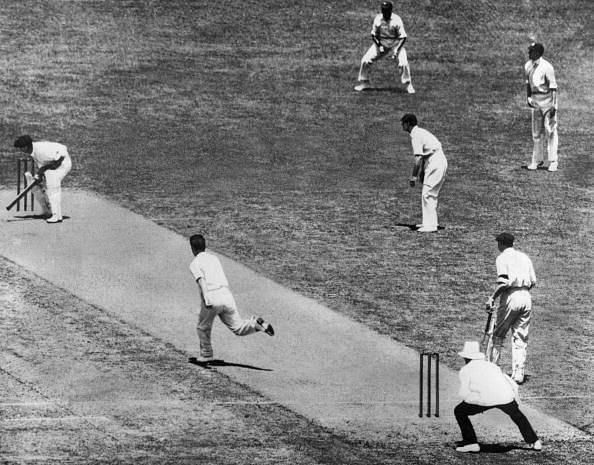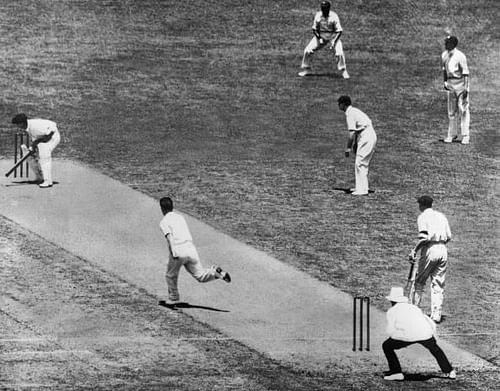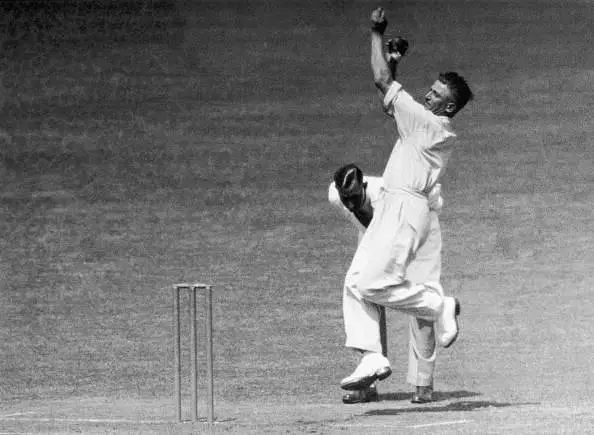
85 years since Bodyline

“Being on the line of the body” - R.W.E. Wilmott in Melbourne Argus
“Half-pitched slingers on the body line” - Jack Worrall in Australasian
“Voce was hit for six, again body line bowling” - Hugh Buggy in his report sent to Melbourne Herald
Above three lines can be said to be the origins of probably the most controversial term to have ever come out from the 22-yards of a cricket pitch - “Bodyline”. The line by Hugh Buggy was rephrased by Ray Robinson at the office of Melbourne Herald and he picked the word Bodyline in the final report of day 2 of the first test match of the 1932-33 Ashes at Sydney. Incidentally, Robinson wanted to use bodyline as a headline but was stopped by his Editor Syd Deamer.
What is Bodyline?
While Deamer had succeeded in stopping the word bodyline from appearing in the headlines, he couldn't stop the spreading of the word. The word spread rapidly like wildfire. So, what was this word bodyline and why the uproar? Bodyline bowling involved bowling at leg stump or just outside it, pitching the ball short so that it was aimed at the body of the batsman. As per the Australian paper The Sun, this leg-side bowling was deliberately intended to injure batsmen.
The architect of this tactic was English skipper Douglas Jardine and it is said that it was devised specifically to combat Sir Donald Bradman. Jardine’s Lieutenant who was going to implement the strategy was the Nottingham miner Harold Larwood.
“I don’t want to see you, Mr Warner”.
Although things had been brewing up in the first two Test matches, hell broke loose in the third Test at the Adelaide Oval. Batting first, the Englishmen scored 341 runs, courtesy half-centuries by Maurice Leyland, Bob Wyatt and Eddie Paynter. On the second day of the match, Larwood and Gubby Allen had the Australians in trouble at 51-4. Australian skipper Bill Woodfull played a courageous knock of 22 runs and in the process also got hit just over the heart by a delivery from Larwood. And when England team’s joint-manager Sir Pelham Warner walked into the Australian dressing room to offer his sympathy, Woodfull made the famous remark, “I don’t want to see you, Mr Warner. There are two teams out there on the oval. One is playing cricket, the other is not.”

Next day was a rest day, and reportedly the Australian board met to consider lodging a formal complaint about Bodyline with MCC. The day after the witnessed mayhem. As Larwood writes in his book - The Larwood Story, “A record crowd of just under 50,000 had swarmed into Adelaide Oval on this day. It was Monday, 16 January 1933. The sun streamed down on the excited spectators, spangling the grass-verged wicket out in the middle with patches of russet brown. A faint breeze stirred from somewhere in the direction of the cathedral and helped it make it a splendid day for cricket. But this was no ordinary day, nor was it an ordinary cricket match. This was bodyline.”
“It’s not your fault Harold”
He was arguably the fastest bowler in the world then and was called as Larwood the Wrecker. The moment which ignited the fire that had long been kept under the wraps came when Larwood hit the Australian wicket-keeper, Bert Oldfield. Larwood bowled one short at Oldfield, who tried to hook the ball. However, he missed it and the ball struck on the right side of his temple. He fell down and all the English players gathered around him. Larwood said, “I’m sorry, Bertie”. Once, Oldfield was able to speak, he said, “It’s not your fault Harold”. He was later found to have a fractured skull. Interestingly, Larwood wasn’t bowling to a Bodyline field setting at the time.
What followed on, left a lot to be desired. Woodfull said, “This isn’t cricket, this is WAR!” The crowd was yelling at the English players. Such was the scene that the English players were not feeling safe on the field. Larwood and few other English players moved near to the stumps so that they could have a weapon in case the crowd charged in. The Melbourne Herald reported, “No such unrestrained hooting and abuse has ever been heard, even at a tense football match in Melbourne.” And mind you this was cricket, the gentleman’s game.
Coming back to the match (although no one seemed interested in the actual cricket), the Australian innings folded at 222 runs, giving the Englishmen a lead of 119 runs. When England’s second innings began, Jardine came out to open the batting wearing one of the most outlandish hats which had a long-peaked creation. He had done this in order to give it back to the crowd. The Australian crowd hated Jardine and he rarely left an opportunity to have a go at them. Jardine went on to score 56 runs. He was ably supported by Wally Hammond (85 runs) and Les Ames (69 runs). The Englishmen scored 412 runs, setting up a target of 532 runs for the Aussies. Only Woodfull and Bradman managed to face the music being played by Larwood & co and the Australians were eventually bowled out for 193 runs.

“The Hangman’s name is Larwood”
England had won the Test by 338 runs. But then, not many were interested in the result of the match. The spirit of cricket was in question. Wisden, the bible of cricket had written about bodyline, “The whole atmosphere was a disgrace to cricket”. Jardine and Larwood were treated as villains in Australia. In fact, in one of the letters addressed to Larwood, it was written, “The Hangman’s name is Larwood”.
A few years later, the laws of cricket were amended to ban bodyline bowling. Larwood was asked to apologise and he refused to do so. He said that he had only done what his captain had asked for. Interestingly, some English players like Gubby Allen and Nawab of Pataudi were against bodyline back then as well.
“Was my bodyline bowling unfair?”
But commenting on the fairness of his bowling, Larwood had said, “Was my bodyline bowling unfair? I never bowled to injure a man in my life. Frighten them, intimidate them, yes. Bodyline could not be considered unfair in the broad meaning because it was perfectly within the rules.”
85 years have passed since that ugly day in cricket and people still debate if Bodyline was against the spirit of the game. Without having actually witnessed the events, it will be wrong for me to comment on the ethical aspect of bodyline. I will just end by quoting Australian cricketer Reg Sinfield who had incidentally been hit by Larwood once, “Probably, I am better qualified than most to say whether Larwood’s bowling is fair. If Larwood wanted to hit anyone he is so accurate he could do it every time.”